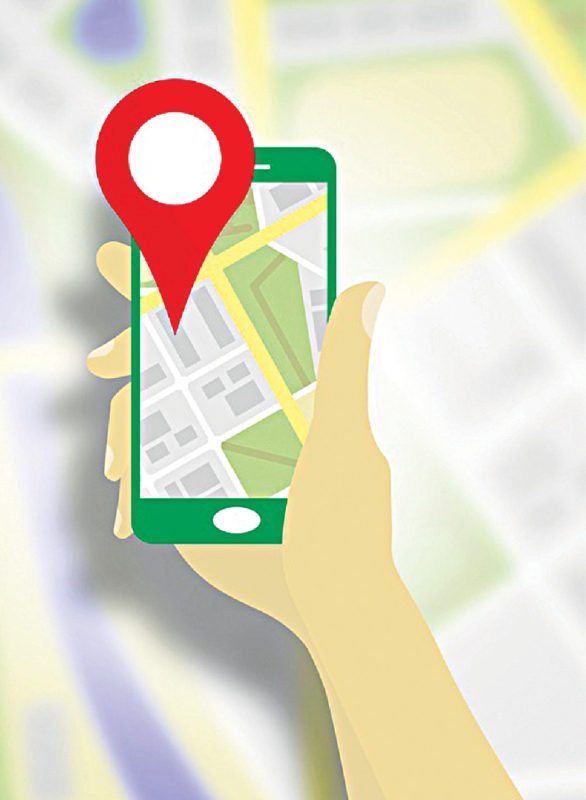- Google Maps helps to reduce logistics costs by cutting down on inefficient driving through longer routes.
On a busy office day, while rushing to work, most of us use Google Maps to know the estimated time of arrival (ETA) and the fastest route available. But a Google Map offers much more than just helping you with your travel time. In fact, reports suggest that Google Maps have improved business efficiency by 37 per cent while the productivity of customers has gone up by 40 per cent. Check out the various ways Google Maps has been helping businesses across the globe.
For routing and logistics solutions
Logistics and delivery enterprises need to keep a constant tab on their fleets of vehicles to ensure that correct products are delivered to customers within expected time. In addition to timely delivery, they need to reduce logistics costs by cutting down on inefficient driving through longer routes.
Australia-based Fleetminder is one such tracking solution company, which integrated Geo coding and Street View applications programming interfaces (APIs) to its system for strict fleet monitoring with location, fleet and vehicle attributes. The system provides insight into the most optimised route and accurate location of the destination. It also provides driving style attributes, giving analytics for driver safety. The application has helped to reduce inefficient driving by 50 per cent and cut down fuel costs and employee overtime by 25 per cent while ensuring timely delivery with an overall 20 per cent reduction in incorrect deliveries.
Another example is USA-based Vagabond Mobile Vending Operations, which utilised Google Maps to create a web-based application to get information on each vending machine on a map interface. All the collected data like targeted geographic location, stock level and cash collected by the machine made it easier for the operators to build efficient routing solutions and restocking schedules. The solution achieved 15 per cent more revenue through improved stocking, 15 per cent expense reduction through route scheduling and 20 per cent operator margin (as against industry average of 2.5 per cent).
Expand customer reach
Google Map’s capabilities of locating a specific store or building can be used to further enhance the customer reach. For instance, Doctor On Demand app uses Google Map APIs to help users locate nearby physicians and healthcare centres accurately based on the location entered. It also allows users to set up a video call with the healthcare specialist. More than 65,000 healthcare centres are listed in the application.

Yet another example is from Australia-based Infoxchange, a non-profit enterprise which has integrated Google Map systems to create the Ask Izzy mobile application. Census reports suggest that one in every 200 citizens of Australia is homeless, while 80 per cent of them own smartphones. The application locates the nearby vital service available, including food, shelter, employment opportunities, legal and financial help, Wi-Fi, charging stations and so on. Presently, over 350,000 services are listed on the map, while 500 users login to the application daily.
Enterprises engaged in development or corporate social responsibility work can use Google Maps innovatively to make their initiatives effective as well as efficient with minimal costs.
Visualisation and monitoring to increase revenue
Organisations need to properly visualise business challenges in resource and material movement, etc. This helps them devise better strategies to improve their services and avoid losses.
Google Maps provided a data visualisation solution to India-based Madras Cements, which wanted to leverage the data through interactive graphics generated by the Ramco ERP system. The service resulted in up to 70 per cent cut in losses and penalties, 40 per cent faster consignment clearance, and 20 to 30 per cent market share.
Airberlin made an example of its own by integrating Google Maps API in its web-based application to provide users an informative interface on flight routes and other details, weather conditions and flight bookings. The implementation saw 40 per cent increase in booking via map interface and 50 per cent increase in website traffic.
Local tracking services
Be it parcel delivery or local cab tracking, this feature is the most widely used by enterprises. Popular applications like Gobasket and Swiggy use Google Maps APIs to receive customer orders, calculate availability, distance and cost, and allow customers to track delivery. Cab services like Grab and GoOpti use the scalability and advantages of Google Maps to provide satisfying experience to their customers and easy work for their drivers. All over the globe, there are many such enterprises that utilise Google Maps for local tracking services.
To sum up
These instances show how different offerings from Google Maps can be customised to the needs of organisations. Enterprises can leverage the intelligence provided by Google Maps services to effectively streamline their expenses management while multiplying their profits through upgraded business strategies.






